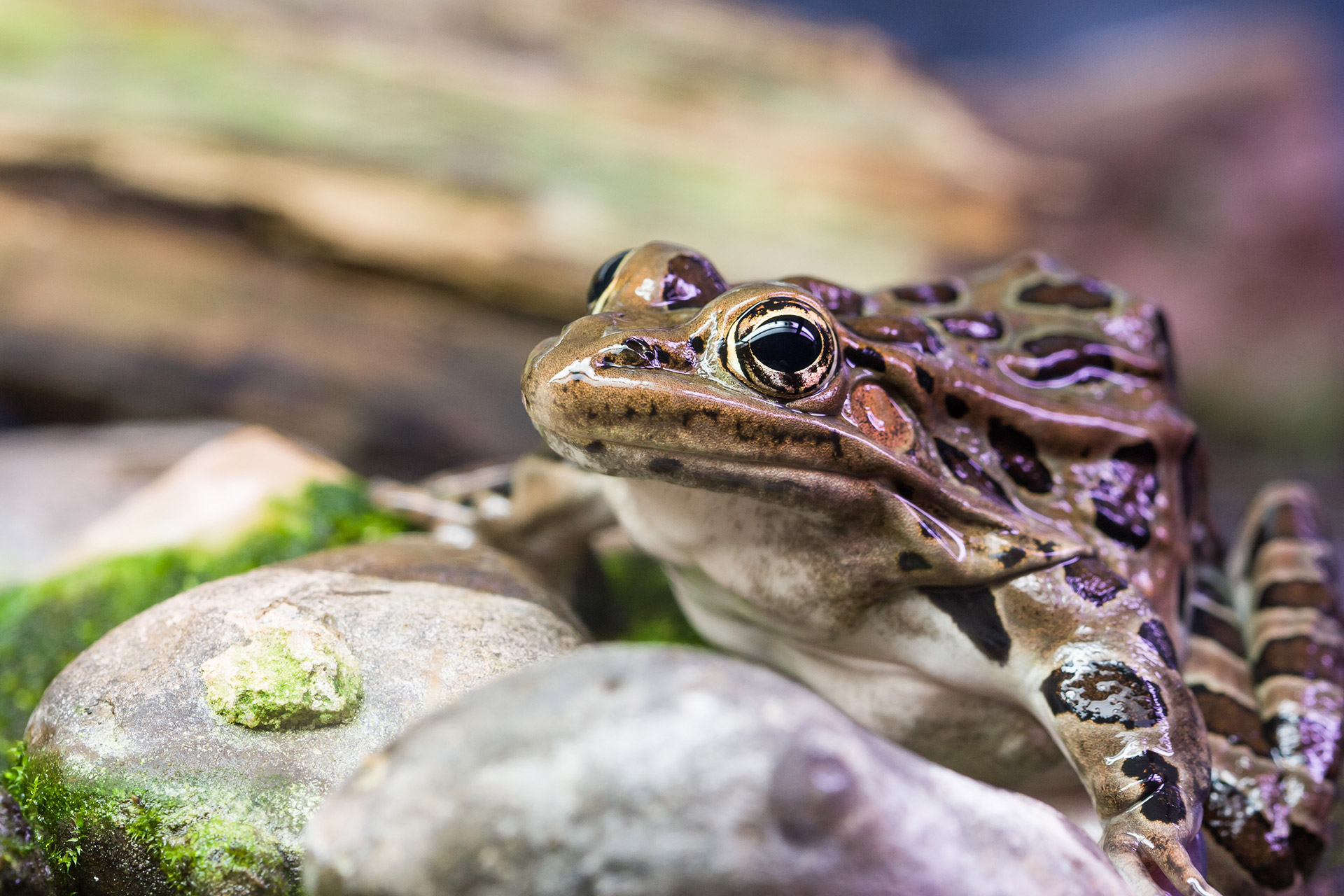
In Québec, the Saint-Lawrence Valley Natural History Society, the non-profit organization that manages the Ecomuseum zoo, has been mandated by the provincial government to coordinate a long term project aimed at monitoring anuran populations that is frogs, toads and tree frogs. And so it is that the Amphibian Population Monitory Program began in 1993 and continues today.
The Amphibian Population Monitoring Program aims to identify long term trends in frog populations in Quebec. We are particularly concerned about possible declines in the abundance of our control species, indicators of the health of ecosystems. Declines thus identified would quickly pinpoint the areas where certain species are struggling to allow measures to be undertaken to determine the environmental causes of these declines.
Frog call route are 8 km in length and distributed throughout the province. Each route must be visited twice each evening during the spring months and each is comprised of 10 listening stations spaced at 800 m. distance. At each station, the observer listens to the calls for 3 minutes then identifies and records the species heard. The observer then assigns an abundance rating to what he/she hears. This allows for the quantification of the size of the groups recorded. The data thus accumulated is used to compare changes in the abundance of the frog species monitored.
The program is open to anyone interested in frogs and who wishes to volunteer their time in the evening for two springtime outings. It's easy; you only need to invest a few hours of your time annually to complete the monitoring census of your assigned pathway! While providing us crucial scientific data, you will learn and have fun; what more can you ask for!
- Monitor the listening pathway each year ideally for multiple consecutive years
- Perform a minimum of two trips per year
- Monitor the listening pathway during the evening hours on dates corresponding to peak of maximum abundance for the targeted species (early spring)
You must first register! Several pathways have already been established and it is essential that these existing pathways be assigned to participants before creating new pathways to maximize the value and continuity of data collected. A participation protocol document will also be provided to you to ensure you can successfully complete the program. Each must avoid creating a pathway without first contacting the program coordinator. We will help you establish your pathway to facilitate the listening process. We will also provide you with all the necessary information and support required to make it easy and enjoyable to participate in the Amphibian Population Monitoring Program in Quebec.
Research and Conservation Biologist
Tel. : 514-457-9449 ext. 600
sufyan.mirza@ecomuseum.ca

